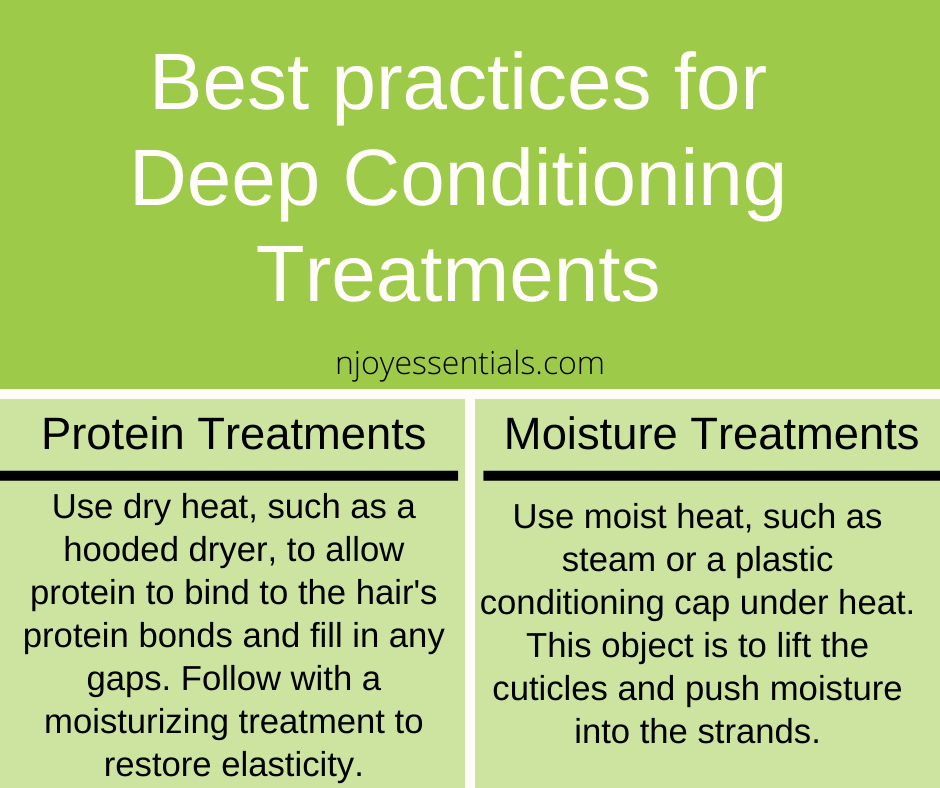Best practices for Deep Conditioning Treatments
9th Sep 2021
Let's talk about Deep Conditioning Treatments
Deep conditioning should be used as a restorative treatment to repair dry hair or damaged hair. The main differences between a regular conditioner and deep conditioner are that regular conditioners use agents that will soften the hair and allow water to saturate and stay in the hair shaft, basically conditioning the surface of the hair strands. Deep conditioners contain ingredients that penetrate and allow your hair to be conditioned within the strand as well as the surface layer
The type of conditioning treatement and how it's used is very important for best results. Specifically, I'm referring to Protein and Moisture Treatments. We've covered the absolute importance of Protein-Moisture Balance and we've discussed Hair Porosity and the types of conditioning that works best. Let's go a little deeper into the two types of treatments.
PROTEIN TREATMENTS
Protein treatments are best used with dry heat, such as hooded dryer. This drying allows the resin and the protein molecules in treatments to bind to the hair. ThisThis is important because the protein molecules fortify the hair by filing in the missing curticles and the spaces between the hair's broken protein bonds. Protein products cannot permanently repair hair. They temporarily "repari" hair and fill in missing pieces of a strand. This helps to strengthen strands and makes the hair appear shinier or have more sheen because the hair strand has what appears to be a healthy cuticle layer that better captures and relects light. Cuticles are important for shine and sheen. Try to use protein conditioners on clean hair that has been washed. This will allow the protein to have the greatest access to the spaces and places on the hair strand that need protein the most. Types of protein ingredient to look for in products are silk, collagen, and keratin. Non-animial, or plant or vegetable-based proteins are wheat, pea, and soy-based proteins.
Important Note: Always fllow a protein treatment with a moisturizing deep conditioning treatment to restore elasticity to the strands. Protein tends to make the strands strong and inflexible. Therefore, the hair is at risk of breakage or snapping with any manipulation from styling or handling. Remember, your hair needs protein-moisture balance.
MOISTURIZING TREATMENTS
Moisture is water. Therefore, moisturizing treatments are water-based and will usually have water as the very first ingredient on the ingredients list. Water, panthenol and natural oils are great ingredients to look for in a moisture-based product. You can add these ingredients to enhance your store-bought conditioners but, remember to only add the ingredients to what you are going to use that day. Adding a liquid to a store-bought conditioner that will sit for days may destabilize or contaminate your product.
Unlike protein products that function to bind to the hair, moisture-based products are made to penetrate the hair. To help these moisture-based products work at an optimum level on your hair, you may want to use them with steam or wet heat (this includes conditioning beneath a plastic cap). Moisture-based products help the hair to be soft, pliable and flexible. Softened cuticles and hair strands tend to bend and move as opposed to breaking away from the hair strand. Unfortunately, there is no magic ratio for protein and moisture. Each head of hair is different. You really must perform a lot of trial and error to find your protein-moisture balance for your head of hair.


